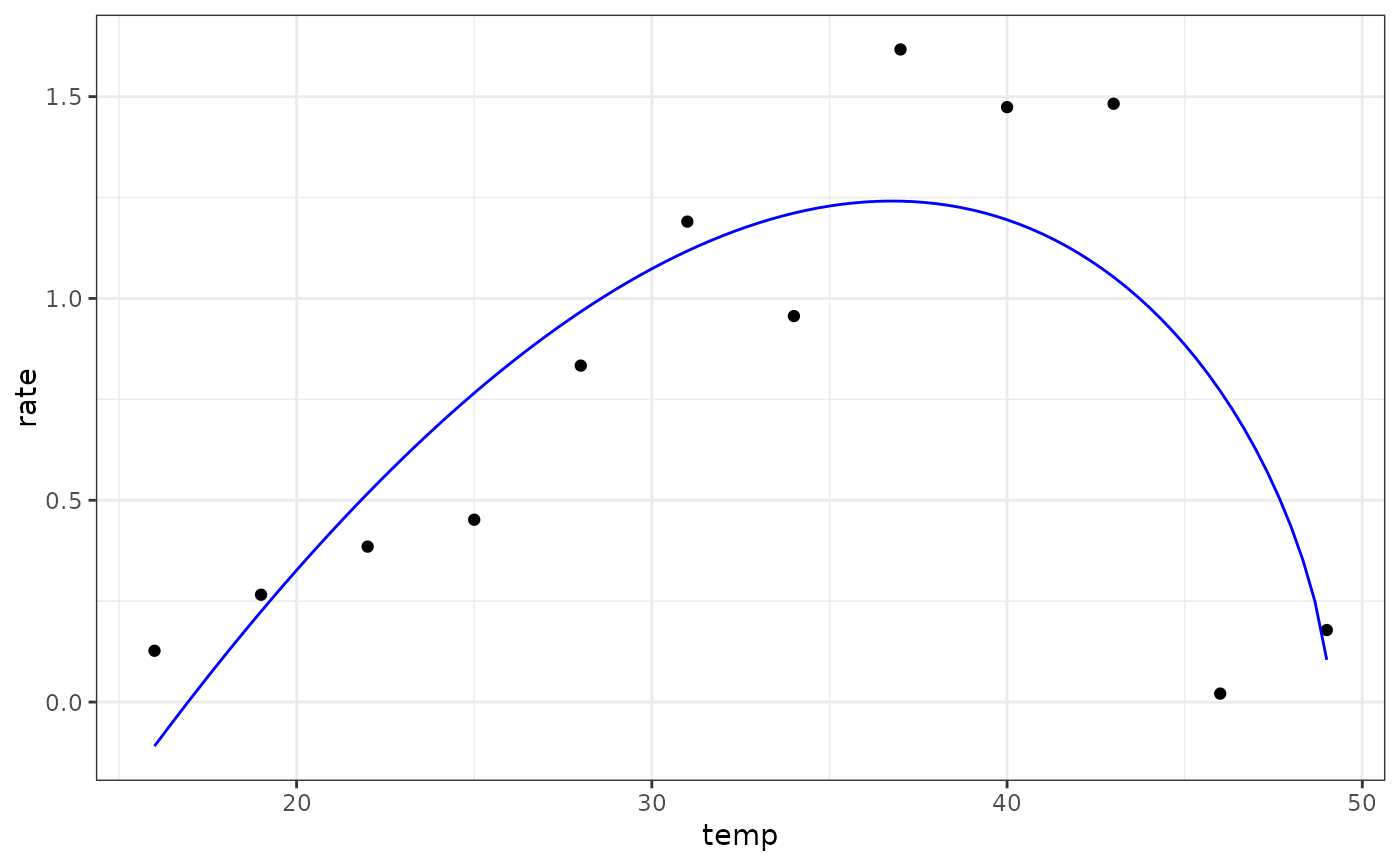
Simplified Brière II model for fitting thermal performance curves
Source:R/briere2simplified_1999.R
briere2simplified_1999.RdSimplified Brière II model for fitting thermal performance curves
Value
a numeric vector of rate values based on the temperatures and parameter values provided to the function
Details
Equation: $$rate=a \cdot (temp - t_{min}) \cdot (t_{max} - temp)^{\frac{1}{b}}$$
Start values in get_start_vals are derived from the data or sensible values from the literature.
Limits in get_lower_lims and get_upper_lims are derived from the data or based extreme values that are unlikely to occur in ecological settings.
References
Brière, J.F., Pracros, P., Le Roux, A.Y., Pierre, J.S., A novel rate model of temperature-dependent development for arthropods. Environmental Entomololgy, 28, 22–29 (1999)
Examples
# load in ggplot
library(ggplot2)
# subset for the first TPC curve
data('chlorella_tpc')
d <- subset(chlorella_tpc, curve_id == 1)
# get start values and fit model
start_vals <- get_start_vals(d$temp, d$rate, model_name = 'briere2simplified_1999')
# fit model
mod <- nls.multstart::nls_multstart(rate~briere2simplified_1999(temp = temp, tmin, tmax, a, b),
data = d,
iter = c(4,4,4,4),
start_lower = start_vals - 10,
start_upper = start_vals + 10,
lower = get_lower_lims(d$temp, d$rate, model_name = 'briere2simplified_1999'),
upper = get_upper_lims(d$temp, d$rate, model_name = 'briere2simplified_1999'),
supp_errors = 'Y',
convergence_count = FALSE)
# look at model fit
summary(mod)
#>
#> Formula: rate ~ briere2simplified_1999(temp = temp, tmin, tmax, a, b)
#>
#> Parameters:
#> Estimate Std. Error t value Pr(>|t|)
#> tmin 16.942850 2.344665 7.226 9.01e-05 ***
#> tmax 49.107438 0.730641 67.211 2.67e-12 ***
#> a 0.013094 0.008992 1.456 0.1834
#> b 1.605833 0.719933 2.231 0.0563 .
#> ---
#> Signif. codes: 0 ‘***’ 0.001 ‘**’ 0.01 ‘*’ 0.05 ‘.’ 0.1 ‘ ’ 1
#>
#> Residual standard error: 0.3926 on 8 degrees of freedom
#>
#> Number of iterations to convergence: 35
#> Achieved convergence tolerance: 1.49e-08
#>
# get predictions
preds <- data.frame(temp = seq(min(d$temp), max(d$temp), length.out = 100))
preds <- broom::augment(mod, newdata = preds)
# plot
ggplot(preds) +
geom_point(aes(temp, rate), d) +
geom_line(aes(temp, .fitted), col = 'blue') +
theme_bw()
